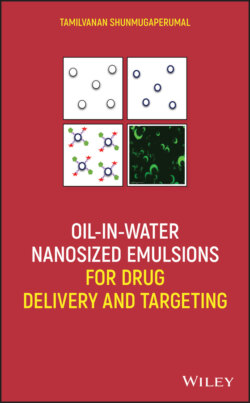Читать книгу Oil-in-Water Nanosized Emulsions for Drug Delivery and Targeting - Tamilvanan Shunmugaperumal - Страница 35
2.2.8. Miscellaneous Additives
ОглавлениеAdditives other than antioxidants such as preservatives (e.g., benzalkonium chloride, chlorocresol, and parabens) are included in emulsions to prevent microbial spoilage of multidose medical emulsions. α‐Tocopherol is a good example of an antioxidant used to obtain a desirable stabilized emulsion under prolonged storage conditions. The presence of components of natural origin such as lecithin or oils with high calorific potential renders the emulsion a good medium to promote microbial growth when it is packaged in multidose containers. Pharmaceutical products when distributed into multidose containers, especially for parenteral and ocular administrations, should be properly preserved against microbial contamination and proliferation during storage under normal conditions and proper use. Incorporation of preservatives in single‐dose vials is also a common procedure if filtration is used as a sterilization method (Tamilvanan 2008). Sznitowska et al. (2002) studied the physicochemical compatibility between the lecithin‐stabilized emulsion and 12 antimicrobial agents over 2 years of storage at room temperature. Preliminary physicochemical screening results indicated that the addition of chlorocresol, phenol, benzyl alcohol, thiomersal, chlorhexidine gluconate, and bronopol should be avoided due to the occurrence of an unfavorable pH change followed by coalescence of lecithin‐stabilized droplets of the emulsion.
Furthermore, the efficacy of antimicrobial preservation was assessed using the challenge test according to the method described by the European Pharmacopoeia.
Despite good physicochemical compatibility, neither parabens nor benzalkonium chloride showed satisfactory antibacterial efficacy in the emulsion against the tested microorganisms and consequently were not suitable for preservation. Therefore, higher concentrations of antimicrobial agents or their combinations may be required for efficient preservation of the lecithin‐stabilized emulsion probably because of unfavorable phase partitioning of the added antimicrobials within the different internal structures of the emulsion (Sznitowska et al. 2002). This finding clearly indicates that the possible electrostatic attraction between the negatively charged lipid moieties of the mixed emulsifying film formed around the anionic emulsified oil droplets (Abele et al. 1997) and the quaternary cationic ammonium groups of the preservative is not the plausible cause for the reduced activity of the benzalkonium chloride. Thus, the possible intercalation of this surfactant in either the cationic or anionic interfacial mixed emulsifying film is likely to occur, preventing benzalkonium chloride from eliciting its adequate preservative action (Sznitowska et al. 2002).
For the development of cationic emulsions in ophthalmology, the use of quaternary ammonium compound (QAC) for their cationic property rather than their preservative effect is being considered. Therefore, Liang et al. (2008) suggested the use of lipophilic cetalkonium chloride (CKC), one of the longest alkyl‐chain components, as a cationic agent in ophthalmic emulsions. With a highly lipophilic QAC, the distribution between the oil and aqueous phases of the emulsion is modified because of the affinity toward the oil phase, further favoring the cationic agent role over the preservative role. Using in vivo confocal microscopy (IVCM) for in vivo tissues images and impression cytology (IC) for ex vivo epithelium inflammatory marker expression in correlation with standard immunohistology for deep infiltration and apoptosis, the same author assessed the toxicological effects of benzalkonium chloride/CKC emulsion/solution formulations on the ocular surface of rabbits following multiple topical applications (Liang et al. 2008). These in vivo and ex vivo experimental approaches demonstrated that ocular surface toxicity was reduced by using an emulsion instead of a traditional solution and that a CKC emulsion was safe for future ocular administration.
Overall, it is preferable to formulate nanosized emulsions devoid of preservative agents and fill it in sterile single‐dose packaging units (manufactured using heat blow‐fill‐seal technology) to prevent potential contamination due to repeated use of multidose packaging. It should be pointed out that the two available ocular emulsion products (Refresh Endura® and Restasis®, Allergan, Irvine, CA, USA) on the market are preservative free and packed in single‐use vials only. Currently there is no commercial parenteral emulsion that contains preservatives and research concerning the problem of preservation of nanosized emulsion is very limited (Jumaa et al. 2002; Pongcharoenkiat et al. 2002; Han and Washington 2005; Swietlikowska and Sznitowska 2006).
